Conference Speakers¶

Paul Logan
The Search for Search
In q4 of 2019 Slack implemented an oft-requested documentation feature: site search. In this talk I'll tell the story of technical and social considerations that went into implementing search on api.slack.com and the philosophy that's gone into shaping it after.
We implemented search using Algolia's REST API after a long time spent narrowing options. Initially we weren't sure if we wanted to build it in house, or host it on a different site entirely. Conflicts with security and the need for as few dependencies as possible forced us into an implementation that even Algolia itself doesn't recommend.
As we move forward, we're considering the best way to give users relevant results while gently directing them away from old API's and unsupported features. I'll discuss options like visual indicators of age on a search result, smart catalog building/prioritization, and the cost of manually adjusting search.

Kateryna Osadchenko
Collaborating with teams on content strategy planning: pitfalls and best practices
I want to discuss the pitfalls and best practices/workarounds of planning a content strategy and importance of finding the right approach, tone, and voice of your content when collaborating with teams of developers, designers, and product owners from the standpoint of a technical writer and content designer.
What can go wrong when you don't plan properly? How to find a balance between consistency and multiple decision-making points? How to plan and distribute resources to reach short-term and long-term content goals? How do synergy and transparent communications within teams help to secure a delivery process?
We will look into the process of identifying, planning, and implementing a content strategy in situations when there is no clear existing one and how to make your planning and implementation process smoother and more organized.

Alexandra White
Moving beyond empathy: a11y in documentation
Accessibility is a crucial part of product creation. Every team member, from engineer to technical writer, must have at least a basic understanding of what accessibility means for their role in product development. Often, writers leave it to engineers to build accessible products but don’t take into consideration how to make their documentation accessible, too. We can and must do better as writers in thinking about accessible language and content design.
Instead of focusing on empathy and why accessibility is important, this talk will focus on how we can actually make change in our work.
In this talk, we’ll discuss:
- Accessible style guides and a11y-friendly words
- Writing accessible HTML (it’s more than ARIA)
- Testing for accessibility in docs
- Advocating for a11y as a priority
You’ll walk away with some easy wins you can have right now in your documentation and product to make it better. After all, accessibility is for everyone.

Anni Bond
Writing Backwards: Documenting the End-of-Life of a Product
Writing documentation for new or existing products is a forward-thinking endeavor. They almost use a template that includes new features and processes the user might use, patch notes, and text on the user interface itself. However, writing for the end of life of a product or service has different needs. Customers who relied on the product might even be hostile. How does a writer navigate these issues?
This talk will include the following topics: - topics a writer may run into for writing end-of-life documentation (e.g., migration processes, new processes after the loss of functionality, feature parity if migrating) - the difference between total shut down and shut down with migration efforts involved - empathize with the customer’s position and continue your support as long as you can - getting QE and marketing involved!
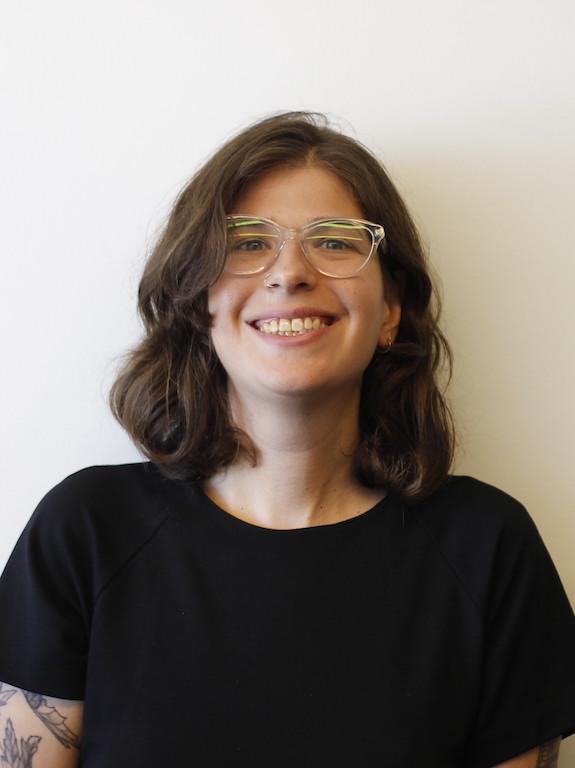
Jessica Garson
Creating Quality Sample Code
With the launch of Twitter Developer Labs, we were releasing new API endpoints which no one had ever used before it was important that we created code in such a way that accessible to anyone who will want to build with the Twitter API. This talk will focus on the processes we used to create sample code and what elements are important to consider.
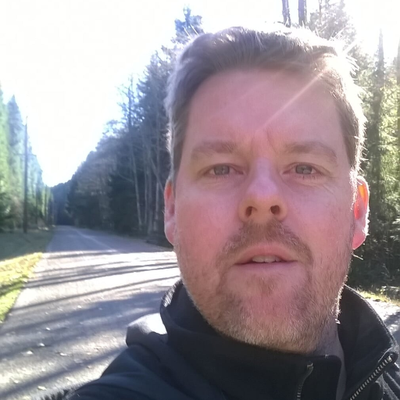
Matthew Baldwin
Read the Rules: What technical writers can learn from board game design
Imagine writing guidance for a product that exists solely in the mind of the customer. That is the plight of the tabletop game designer. Yes, games come with boards and cards and dice and counters, but those are but the UI, so to speak. The essence of a tabletop game is the set of algorithms that govern play, as specified by the instructions. In that sense, a rulebook is both software and documentation, rolled into one.
Matthew Baldwin has read what can only be described as an absurd number of rulebooks -- and written a few to boot. In this talk he will articulate the qualities that make for a clear, concise, and comprehensive set of instructions, and how to apply those same principles to technical documentation writ large. He’ll discuss recent innovations in board game guidance and how they map to the ever-evolving field of software documentation. And he’ll even throw in a few tabletop recommendations, for those as interested in expanding their library of games as their writerly repertoire.

Luca Janssens
Finding the line: Balancing business continuity and documentation debt
There are software companies that have undervalued documentation or are still in the process of integrating it as an essential part of the software development life cycle. This has caused them to generate a documentation debt, which has led to:
- Confusing and disorganized documents.
- Scattered and inconsistent information sources.
- A lack of documentation altogether.
Coming into a fast-moving agile work environment as an information developer, I found there is often little time and insufficient resources to resolve that debt. Chances are that you are required to work on current documentation requirements in favor of business continuity. The following questions then arise: “How can we tackle both current documentation needs and the existing documentation debt?” “And, is that even possible and necessary?” To the latter, I say yes and yes! Even more, I argue that companies are open to listen when you speak their language.
The former question I aim to answer in this talk. I cover how to come up with an actionable strategy to tackle the existing documentation debt while also dealing with incoming documentation needs (for new products, versions, features, bugs, …). Amongst others, it involves:
- Defining the problem of documentation debt in your company.
- Finding the business value to obtain resources, convince management, and invite stakeholder collaboration.
- Forming the documentation debt into a product by designing a solution.
- Understanding how your company works and handles business continuity.
- Creating a strategy and roadmap for your product.
- Organizing and managing your time so that the long-term does not interfere with the short-term.
In short, it requires wearing many hats, such as that of a product owner and project manager, and extensive collaboration with different stakeholders. What this talk really wants to bring across is that it is possible to come up with a balancing act that satisfies both the short-term and long-term documentation demands.

Ryan Paul
Documentation as an application: enabling interactive content that is tailored to the user
The modern web platform provides a rich canvas for presenting content, making it possible for documentation to offer a user experience that more closely resembles an application rather than a traditional user manual. Exploiting these capabilities and making them easily accessible to technical writers requires corresponding advancements in content authoring systems.
As a technical writer and engineer in the Docs Product team at Stripe, I'm responsible for developing the new authoring system for our next-generation documentation platform. In this presentation, I'll cover:
- How investing in richer documentation that provides a more engaging and intuitive experience can increase the success of our users and help them get to market faster with our products
- How we're dynamically tailoring content for individual readers and selectively surfacing relevant information to users with specialized requirements, based on factors like geographic location and attributes of the user's logged-in account
- How we've evolved our authoring system towards a fully declarative format that supports user-specific customization, client-side interactivity, and deep static analysis while keeping code decoupled from content
- How our cross-functional Docs Product team treats our documentation as an application, driving concurrent improvements to both the user-facing documentation experience and internal authoring tools
Features like dynamic content generation, contextual awareness, and client-side interactivity are making documentation more like software. But taking advantage of these features leads to more code creeping into content, resulting in a steeper learning curve that can potentially discourage participation from prospective documentation contributors. In this presentation, I'll share the lessons learned while building an extensible Markdown-based content format that supports application-like user experiences and provides the technical advantages of documentation-as-code while avoiding the complexity and elevated barrier to entry, ensuring that content authoring remains inclusive and accessible.

Luc Perkins
Model-view-docs: taming large-scale documentation projects using structured data
Solid documentation almost always involves skillfully wordsmithed narrative text. But in the contemporary software landscape, narrative text increasingly—yet not always comfortably—lives alongside information generated from structured data formats like JSON and YAML. This includes REST API docs, command-line tool docs, supported platform matrices, and much more.
In this talk, I’ll argue that using structured data can make docs, especially for highly multi-faceted software projects, more robust, informative, navigable, and maintainable. I’ll first present a more theoretical argument in favor of re-conceptualizing documentation in terms of what I call the “model” layer and the “view” layer. This will set the stage for the centerpiece of the talk, which will be a walk-through of an information portal for a fictional database that includes docs for a a CLI tool, client SDKs, a REST API, numerous configurable parameters, and a bevy of tricky core concepts.
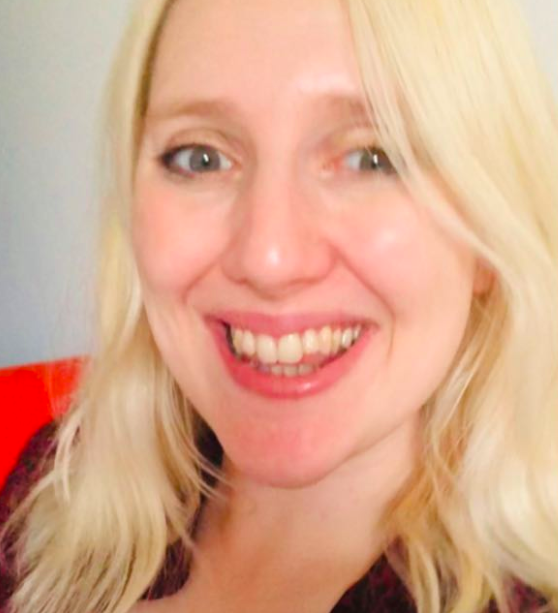
Lucy Carey
Globalise the docs
Your docs are looking good, the demand is there, and you’re thinking it’s time to open up your content to a non-English speaking market. Unfortunately, pushing out localised content isn’t always a plug-in-and-play exercise. Whilst going global is a fascinating process, it can force you to crank your instinctive writer pedantry up a notch. In this session, I will:
- Explain some best practices for optimising technical content for translation.
- Look at how translating and localising docs might impact your planning and release cycles.
- Take you on a deep-dive into human versus machine translation, and deciding what’s best for your business need.
- Examine some approaches for working around monolingual UIs and other assets when there’s demand for bilingual docs.
- Highlight important things to check in quality control - even when you can’t read the finished product.
To be a good global content roadie, there’s a lot more to consider than just waving the words off to a translator and hoping for the best. Plunge in without the right pre-work, and the end result can quickly end up as more of a warped tour than triumphant international smash. Get it right, and all your team can benefit from the insights you’ll uncover along the way. You’ll learn new ways of thinking about UI. You’ll find out things about your target market that could influence your whole product strategy. You’ll get to form really strong opinions about AI-based translation. Most importantly, you’ll uncover new and thrilling depths of content geekery.
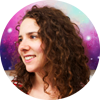
Brooke Wayne
Don’t Fear Migration! How to Successfully Move Docs to a New Tool
As Documentarians, your users, whether they are internal (like your customer support team) or external (like your customers), will always need simple and fast access to your documentation, no matter what tool(s) you’re using for your docs. But what if you and your users need to move to a new tool because the old one’s painful and frustrating to use? Migrating documentation can feel overwhelming, especially when so many people rely on it, and the expectations are high.
The good news is, migration doesn’t have to be scary. Using a recent experience where we had to migrate Customer Support’s knowledge from our old tool (Confluence) to a new tool (Guru) as an example, this talk will go over the 7-step process of how anyone can migrate their docs as smoothly as possible:
- Use a project plan to track work, manage time and keep stakeholders updated.
- Audit your docs so only updated and useful content is moved over.
- Establish a foundation with a set information architecture and a structured search/tagging system.
- Break up the work into blocks.
- Develop a launch + training plan to make the change easy on your users.
- Migrate the documentation as planned.
- End of the project with a retrospective and report for closure.
Doing all this preparation is key to a successful migration to the new tool, so you’re able to anticipate and overcome any barriers that arise and complete your project deliverables on time and on budget. A successful migration means your users are more empowered and educated to find docs in your new tool; your stakeholders are happy; and most importantly, people are finally reading your valuable documentation!

Shavindri Dissanayake (Shavi)
Why SDK Docs Matter — And What I’m Doing About It!
When developers implement an SDK, they usually include some information in the GitHub README. But unless you provide 1:1 support to customers, this information is not enough. That’s why it is important to have solid documentation around your SDKs, and this means going beyond step by step documentation.
Here’s what SDK docs need:
- Easy to find
- Consistently structured
- Easy to understand
- Example(s) for each SDK
In this session, I talk about my experience around improving SDK documentation for products. If you are struggling with these questions around your SDKs, you are not alone!
- How do I make sure that users use the correct SDK from the list of SDKs?
- Do I need to go that extra step and provide samples?
- What about reference documentation (e.g., Javadoc) to complement the README?
- I am a technical writer; how do I test it out?
- What do I do if I’m confused by the developer’s explanation?
The above questions are great building blocks to get you started on your SDK documentation. I will provide answers to these questions in my session and share how my team developed a great documentation strategy for our SDKs (you get to see the good and the bad).
- We help our users chose the correct SDK from a list of 25 different SDKs.
- Analytics was our friend.
- Include samples and give a preview of what needs to be done.
- Maintain consistency across SDK documentation.
- Develop an internal strategy to keep the samples, and documentation updated with each code change.
- Include licensing information so users are able to use the SDKs.
That’s not all! You will also find out how SDKs build a developer community around your product. I will talk about how you can improve your SDKs further by guiding your community to report bugs, request features, and much more using your documentation strategy.

Colin Dean
Building a content-focused, scientific document authoring workflow for Data Scientists and Engineers alike
I observed a white paper authoring collaboration workflow problem at my Forbes 50 employer wherein a tedious workflow around legacy tooling caused undue stress, headaches, rework, and, ultimately, a cosmetically poor-looking document with inconsistent content and styles. Knowing that a good document requires both good content and presentation, I proposed and led the creation of a simple workflow amenable to our team's software engineers and data scientists: treating the white paper text as code with technologies including Markdown, GitHub Enterprise, Pandoc, LaTeX, and a review process that gets the tooling out of the way in order to enable content authors to focus less on logistics and more on writing and reviewing.
The result was that a team of seven engineers and data scientists created a 50-page document containing text, diagrams, equations, graphics, and more in just two weeks. The result greatly pleased our directors and executives. They praised our team not only for the incredibly valuable content, but also the professional appearance of the document. When they learned about the peer review process we used to create it, they wanted more teams to use it.
This talk focuses on the problems of passing around files by email or shared drives, the problems of collaborative editing of online documentation, and the problems we're still addressing in our solution that we've now used to author several significant internal documents.
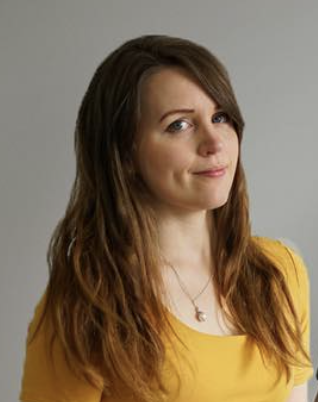
Sally Stumbo
Walking Backwards: Tracing the New Customer Journey from Finish to Start to Help Shape Content
Hi, I'm Sally Stumbo. I have successfully transitioned from a career in customer service to one in technical writing and knowledge-centered service work. Here's how I did it, and how my support background has helped and influenced my tech writing work. When I was a technical support engineer at Duo Security, I gained a good understanding of our customer's most common issues, and insight into the approach our support team takes in solving a customer's issue. Now as a technical writer, I'm able to use that experience to work on projects and develop content that will help deflect support volume. Duo uses a slightly modified version of the "Knowledge-Centered Service," which means that, in addition to the step-by-step product documentation created by our Engineering team, we have an internal and public knowledge base that captures any troubleshooting steps, common questions, and best practices for our customer and customer-facing teams.
My primary role is editing and publishing crowd-sourced content from our customer-facing teams. Just last quarter we published more than 200 articles written by our 23 support engineers alone, and lots of other teams contribute. While the crowd-sourced articles are great, I had an idea for something else I could focus my time on during work: I had anecdotal evidence, based on my experience in support, that new customers were reaching out to support before reading the documentation or searching the knowledge base. But why? What information were they receiving in the early stages? What information should they be receiving?
To better understand the customer journey from the moment they sign up for a trial account, I devised a plan to audit support cases created by customers in their first 90 days of having an account. I wanted to compare the questions they were asking with the content they receive in email campaigns, as well as review whether the topics are covered in our documentation or in the knowledge base already.

Dan Gunter
Where Documentation, Cloud-hosted Interactive Tutorials and Continuous Integration Testing Intersect
As part of an open-source science and engineering project spread between national laboratories and universities, we have developed an approach that embraces the idea of “document driven development”, by making all our documentation runnable within our continuous integration test suite. Most notably, for our tutorials and examples, we reuse a set of Jupyter Notebooks in three ways: as the base for “live” tutorials and demos, as static documentation disseminated on web pages (and other generated forms), and as integration tests that we run in our continuous integration system. While the idea of runnable examples is not new, their full realization as both a document that can be used to guide a room full of workshop attendees through a tutorial, and as a detailed test of the software, is not common in open scientific computing. But, fundamentally, this is not a difficult task and should arguably become a standard approach, regardless of the specific technologies used. We have found that this approach has helped maximize the limited software engineering resources and combined the skillsets of scientist/programmers and programmer/software-engineer/devops in the same project.
This talk will show-and-tell how the documentation for our project grew from the usual Sphinx-generated RTD system, to combining documentation with code examples, largely via Jupyter Notebooks, to integrating those examples into our CI test system, to using those regressed Notebooks as live interactive documented tutorials for a conference-size room full of interested parties.
From there, the talk will turn to the future and discuss the challenges we face of ensuring quality in both the documentation and the correctness of the code, as we look to scale our approach beyond a few core developers.
The examples, tools and technologies for this talk were developed by the Institute for the Design of Advanced Energy Systems (IDAES; website: ideas.org), a Department of Energy funded project that is developing a Python-based framework for the design and optimization of innovative steady state and dynamic processes.

Avi Flax
Set your data free with model-based architecture diagramming
Diagrams are an excellent tool for documenting the architecture of our software systems: they’re information dense and they utilize the visual circuits of our brains to create effective learning experiences. Many of us create or update such diagrams regularly; there have been many talks on this topic at this conference over the years.
As great as diagrams can be, they have some downsides. In particular, they tend to lock up massive amounts of rich and crucial information into a format that can’t be reused in any other context. Because the information is locked up, it tends to be duplicated in various places in various formats and it takes significant effort to keep those duplicative datasets in sync.
I’ve recently come to believe that there’s a better way: modeling. If we model our systems in data, and make that data accessible, we are creating a single centralized source of truth for what systems, datastores, datasets, services, and people (roles) we have, and how they relate to each other.
There are many uses for that dataset; it’s not just a model, it’s also a catalog, or registry, of what is there even — a catalog that many people across an org need, and will be motivated to keep up to date. For example, anyone tasked with data governance needs to know what datastores and datasets exist, and who and what interacts with them. Security auditors need similar information.
Diagrams are another of the many uses of that dataset, and our diagrams can be greatly improved by being based on models of our systems. Multiple diagrams (“views”) can include the same elements of the model, but those elements are defined only once, in the model. If we change an element, we can quickly and easily re-render all the diagrams that include that element.
I’ll describe various benefits of documenting software architecture as data and share how I’ve been doing so, and describe my plans for improving the tools and approach. I’ll show lots of examples and try to wrap it all up at the end with an enthusiastic yet gentle call to action.









